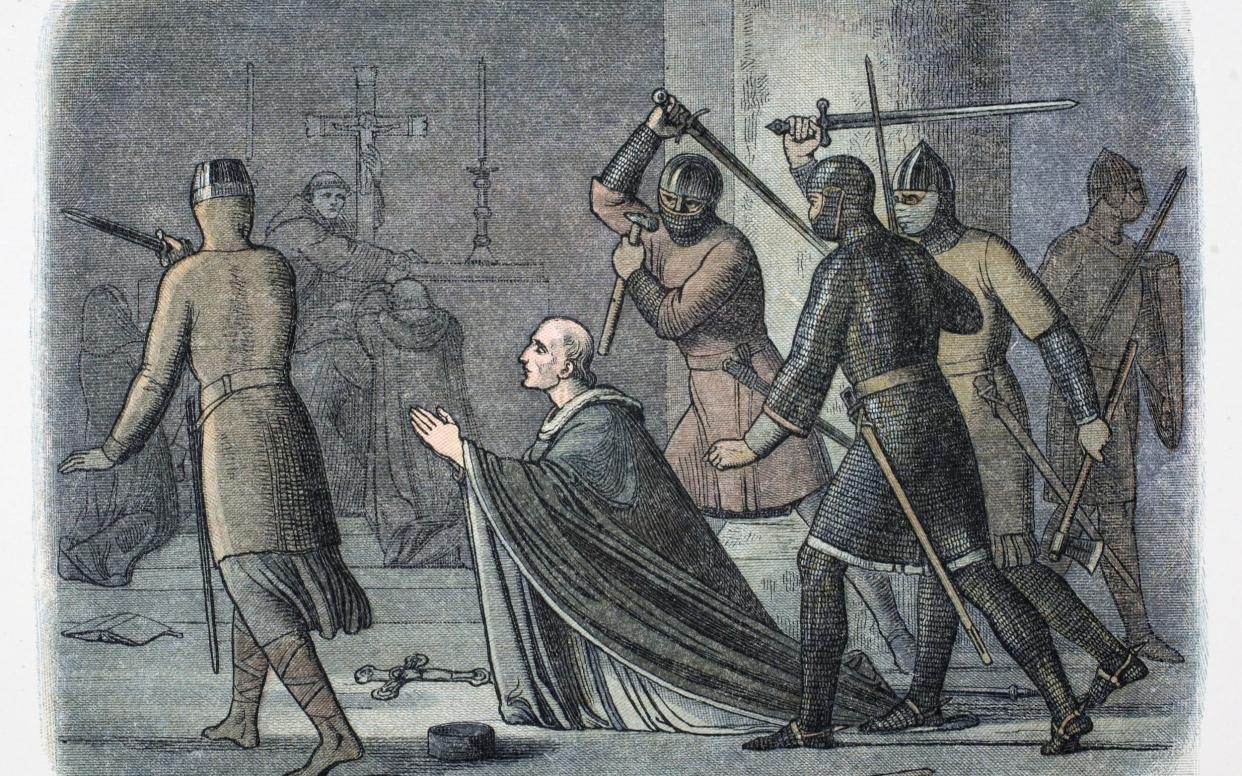How murder of Thomas Becket impacted the environment, according to study

- Oops!Something went wrong.Please try again later.
Thomas Becket’s infamous murder helped medieval industry pollute the atmosphere, an academic study has found .
New research has shown that lead pollution in the air was as bad in the 12th century as it was during the Industrial Revolution.
Scientists studying 800-year-old ice samples found that the Archbishop of Canterbury’s unholy assassination in 1170 helped drive this environmental damage.
The medieval lead industry and brutal Plantagenet politics were intimately linked, the study found, and responsible for slumps and spikes and in air pollution long before the advent of factories.
Crusades to the Holy Land and the signing of Magna Carta were intertwined with the polluting production of lead, which released the poisonous metal into the atmosphere.
Before these events the stormy friendship between “turbulent priest” Becket and King Henry II led to a curious environmental incident, Nottingham University researchers revealed.
Henry believed he had an ally in the lowborn Becket, and entrusted him with the highest holy office in the land in order to exert greater control over the fabulously wealthy and powerful Catholic Church.
But his friend and former Chancellor proved surprisingly devout and infuriatingly intractable, even excommunicating some of Henry’s supporters.
The enraged king finally asked “will no one rid me of this turbulent priest?” and four knights duly obliged, butchering Becket inside Canterbury Cathedral.
Scientists at Nottingham University found that this dispute led to a slump in lead production while the economically mighty church refused to cooperate with the crown, and then a boost after the infamous murder.
Richard III crusading to Jerusalem caused a fall in air pollution while industry stalled, and his corrupt brother John being brought to heel with Magna Carta after civil strife also had an environmental impact.
Evidence of these peaks and troughs was found in ice samples from the Colle Gnifetti glacier in the Italian Aps, where winds had blown the lead-laden air from industrial centres in England.
The ice contains traces of the metal perfectly matching records of lead production in medieval audits known as the Pipe Rolls.
“The correlation between evidence of lead production in Britain in the ice core deposits and the tax paid on lead mines is astonishing,” said Professor Christopher Loveluck, of the University of Nottingham.
“We see direct associations between production levels and the workings of government at the time.
“This is because medieval governments shut down in the interregnum. The ice core shows precisely when one king died, and lead production fell and then rose again with the next monarch.
“We can see the deaths of King Henry II, Richard the Lionheart and King John there in the ancient ice.”
Industry in the Angevin Empire had a direct impact on the planet long before the billowing chimneys of 19th century Britain.
Prof Loveluck added: “Our results show that the 12th century has the same levels of lead pollution as we see in the mid 17th century and even in 1890, so our notions of atmospheric pollution starting in the Industrial Revolution are wrong.”
The study has been published in the Antiquity journal and is the result of work between the Universities of Nottingham, Harvard and Maine.
A 72-metre long ice core provided the chemical evidence of lead in the atmosphere, released by industries mining and working the toxic metal. It was unearthed in medieval Europe for silver mining, and was used for coins, pipes, and paint.
Lasers were used to analyse the annual layers of lead left in the 800-year-old ice core taken from the Alps.

